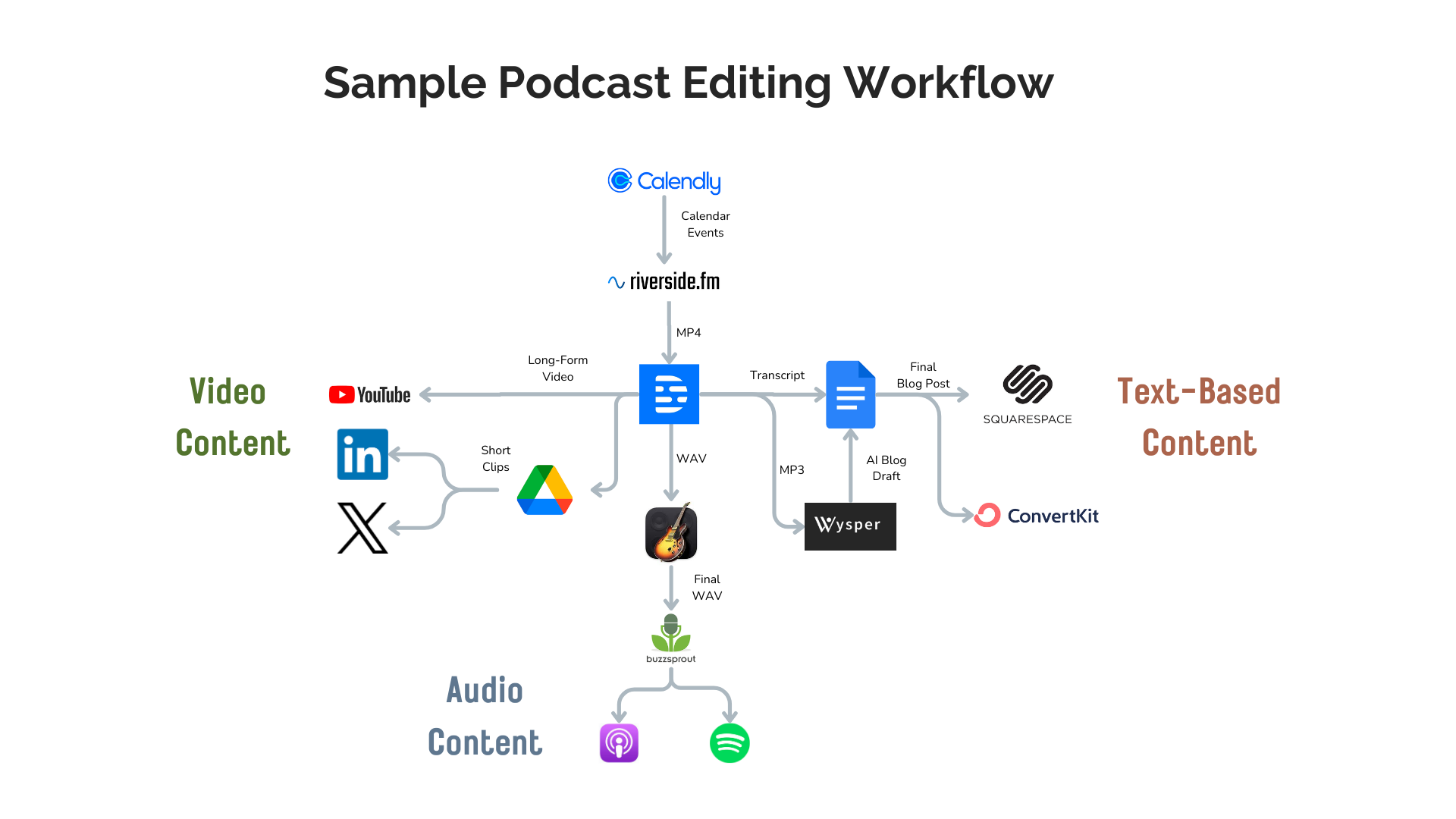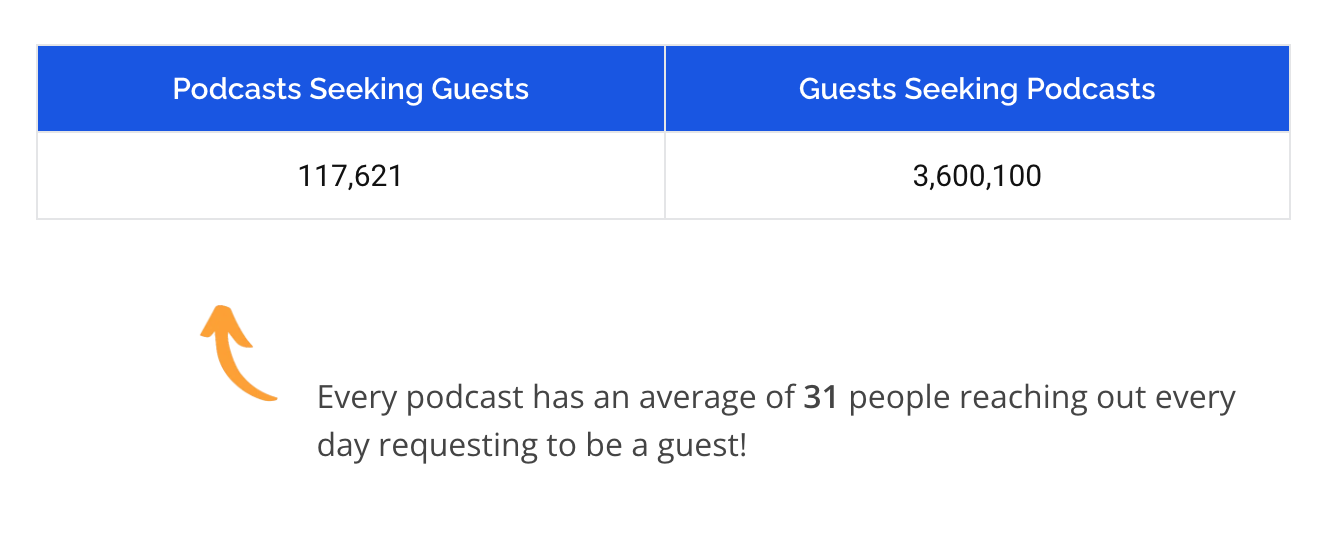Podcast Marketing Strategy for Experts and Consultants
Podcasts are a great way for experts and consultants to grow their networks, humanize their brand, and create endless content. But what’s the most effective podcast marketing strategy? What’s the best way to spread the word and attract new listeners?
This article outlines how a podcast can connect to your business, the benefits of a podcast marketing strategy, and the core components: distribution, amplification, and conversion. If you’re ready to work together to grow your business podcast, check out our podcast marketing services.
Benefits of an effective podcast marketing strategy
Podcasts can be used to impact many different marketing goals that roll up to revenue growth. Below are examples of marketing objectives and how a podcast can help achieve each one. Making this connection is a critical part of your podcast marketing strategy.
Generate more leads. Interview guests who fit your ideal client profile (ICP) to attract peers of guests who are going through similar challenges.
Increase brand awareness. New listeners will become more familiar with your brand, building trust.
Deepen client relationships. Interview current and past clients or customers on your show. Tell stories of what it’s like to work together.
Establish strategic partnerships. Co-host a podcast with a strategic partner. This can lead to increased brand visibility and referral revenue.
Attract top talent. Have conversations with internal employees to amplify their expertise and give listeners a window into company culture.
Create a show worth listening to
First thing is first—you have to create content your ideal clients will actually care about. Otherwise, your podcast marketing strategy is essentially putting lipstick on a pig. Think about it like this: your podcast is the product. You need to deliver enough value that your ideal client will spend 30 minutes listening to what you have to say. Make it worth their time.
There are two primary reasons people listen to podcasts:
To be educated
To be entertained
Your podcast should appeal to both of these desires. If you can help your ideal listeners improve their lives while also making them laugh, you’ve got a home run. That’s why positioning is so important. Here are some questions to consider:
What topics do your listeners actually care about?
How will you structure your podcast episodes?
What emotions are you trying to evoke?
Do you need to find a podcast co-host?
Create a podcast distribution plan
Most podcasters look at downloads as the ultimate measure of a show’s success. While that may be true if you’re running ads on your show, ‘downloads’ shouldn’t be the end-all be-all metric to optimize.
In fact, over-optimizing for episode downloads can choke the reach of your message and key moments from the podcast. Recently, I interviewed Ross Simmonds, where we talked about the importance of distribution in your podcast marketing strategy. Here’s a clip of what Ross had to say:
In the spirit of practicing what I preach, I’ve developed a streamlined podcast editing workflow, illustrated below. This allows me to create seemingly endless content from a single source for my one-person business.
Amplifiers: the key to effective podcast marketing strategy
Podcast amplification is when your podcast reaches an audience of 2nd and 3rd degree connections. There are three ways to amplify your podcast content:
Earned Media — Shares, mentions, re-posts, and recommendations from listeners, guests, employees, referral partners, and other key players.
Owned Media — Web properties you (or your company) own, like social media profiles, blogs, newsletters, and more.
Paid Media — Advertisements on podcast platforms, social media, YouTube, display, and more.
A word of caution; failing to build a strong earned and owned media foundation before investing in paid media can lead to wasted or inefficient ad spend. Consider layering on paid media only after gaining traction organically.
Convert listeners into loyal customers with a podcast newsletter
It’s challenging to know who subscribes to your show, and how many subscribers you have. Consider adding a newsletter as part of your podcast marketing strategy. This way, you have a means to start a 1:1 conversation with your subscribers, and offer your services.
Recently, I interviewed Kyle Adams from ConvertKit about the synergies between a podcast and a newsletter. He views a newsletter as a “product” rather than a marketing channel. Looking at your newsletter through this lens will help you increase its value to listeners.
A newsletter is a place where you can repurpose podcast content to be consumed natively in the inbox. Social platforms like X (formerly Twitter) can be effective places to capture attention and convert users into subscribers. In the inbox, add native value, weave in calls to action, and deepen engagement with your subscribers.
Guesting -vs- hosting: which makes sense for your podcast marketing strategy?
Which makes more sense for your podcast marketing strategy? Being a guest on existing podcasts or hosting your own business podcast?
Pitching yourself as a podcast guest makes the most sense for your podcast marketing strategy when you want to deliver a focused message to existing podcast audiences. For example, let’s say you release a new book and want to do a PR campaign. Hitting the podcast circuit as a guest is a great way to spread the word.
However, you may face an uphill battle. According to the Independent Podcasters Report by PodPros, there are 31x more guests seeking podcasts than podcasts who are seeking guests. Sure, this data looks at podcasts across all genres, but I'd imagine that number isn't too far off in the "business" genre.
Let’s craft a podcast marketing strategy together
Whether you need help with podcast marketing strategy, audio production, guest outreach, or coaching our podcast marketing services are designed to help business leaders in B2B and professional services launch and grow a podcast. Work with an experienced podcaster and marketer. Request a free podcast consultation today.




